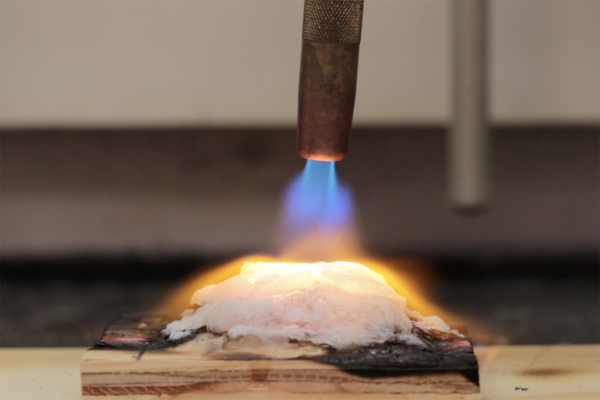In recent years, forest wildfires or bushfires have been occurring frequently around the world, causing significant losses to life and property. Wildfires pose a severe threat to the safety of people living in the Wildland-Urban Interface (WUI), while also causing serious damage to the economy and critical infrastructure of society. Recently, American scientists have developed a spray gel that is expected to more effectively protect and reduce the damage of wildfires to buildings.
Currently, the commonly used fire retardants by the United States Department of Agriculture Forest Service include long-term fire retardants, foam suppressants, and moisture-retaining gels. Long-term fire retardants are typically diluted with water and dropped from aircraft to reduce the intensity of vegetation burning by using fire-retarding chemicals such as ammonium phosphate, to prevent the fire from spreading further. Chemical foams and moisture-retaining gels can only act as short-term extinguishing agents, with the fluorinated surfactants in chemical foams posing potential harm to the environment, and the water content in moisture-retaining gels quickly drying out and losing their fire-retardant properties in high temperatures and strong winds.
Therefore, there is an urgent need to develop new, environmentally friendly wildfire retardants to improve wildfire management efforts. Researchers from Stanford University and California State University have developed a new type of moisture-retaining (hydrogel) gel that is environmentally friendly and has excellent fire protection capabilities, with longer duration and more effective fire prevention compared to existing gels on the market. This research was published in the journal “Advanced Materials” on August 21.
The moisture-retaining gel designed by the researchers is made from non-toxic ingredients approved for use by the U.S. Forest Service, with its main components being MHEC (methyl hydroxyethyl cellulose) and CSP (polysaccharide and silica nanoparticles).
These materials are easily biodegradable by soil microorganisms, can be stored stably, and applied rapidly with standard equipment. They allow the hydrogel to firmly adhere to buildings and key infrastructure, forming a thick moisture barrier that even maintains its fire-resistant properties as it ages.
During a wildfire, the surrounding air becomes extremely dry and hot (up to 100°C), which forces the moisture in the thick moisture barrier to evaporate, creating a first protective layer to ensure that the building does not catch fire quickly.
As the moisture evaporates and the cellulose burns off, the silica particles in the hydrogel form a foam layer (aerogel), which acts as the second flame-retardant layer. This principle takes advantage of the excellent heat insulation properties of silicon dioxide foam and its melting point at around 1700°C.
In experiments, the researchers applied three types of hydrogels to plywood, creating a 0.25-inch (0.6 cm) film layer. These gels include a commercial hydrogel, one containing HEC, MC, and CSP, and their newly developed hydrogel containing MHEC and CSP.
Using a gas burner (flame temperature 1700°C-2054°C) to simulate wildfire flames (temperature 797°C-1197°C), the results showed that the commercial hydrogel product lasted less than 90 seconds, while the newly developed hydrogel with MHEC and CSP resisted the burner for over 5 minutes without blackening the plywood. Although the hydrogel containing MC, HEC, and CSP resisted the burner for over 7 minutes, it had issues of aging and being less environmentally friendly.
Scientists state that the fire-retardant performance of this new hydrogel depends on its water-retaining capacity and the high-temperature resistance of the silicon dioxide aerogel, which continues to be effective even in hot, dry conditions, making it ideal for use on buildings and in forests to protect them from wildfires.
Senior author of the paper and Associate Professor of Materials Science and Engineering at Stanford University, Eric Appel, explained, “Under typical wildfire conditions, commercial moisture-retaining gels dry out within 45 minutes. Our developed gel has a wider range of applications, can be sprayed before fires occur, and provides excellent protection, effectively working even during a fire.”
Appel further explained, “When our hydrogel encounters fire, the water inside boils first, then the cellulose burns, leaving behind the silica particles that aggregate into foam, providing high insulation to disperse heat and protect the underlying material, which can be easily washed off with water.” “Currently, this moisture-retaining hydrogel is safe for humans and the environment. In the future, we will continue to optimize and evaluate it for more applications to protect critical infrastructure.”
This work was supported by the Gordon & Betty Moore Foundation, Schmidt Science Fellows, and the National Science Foundation.

